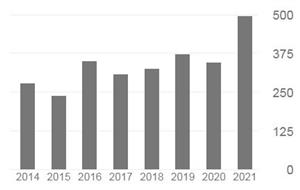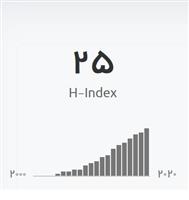The Effect of pH on Surface Hardness and Microstructure of Mineral Trioxide Aggregate
Aim: To evaluate the surface microhardness of mineral trioxide aggregate (MTA) specimens following exposure of their surface to a range of acidic environments during hydration. In addition, the morphological microstructure features of samples were studied by scanning electron microscopy (SEM). Methodology White ProRoot MTA (Dentsply Tulsa Dental, Johnson City, TN, USA) was mixed and packed into cylindrical polycarbonate tubes. Four groups, each of 10 specimens, were formed using a pressure of 3.22 MPa and exposed to pH 4.4, 5.4, 6.4 and 7.4, respectively, for 4 days. Vickers microhardness of the surface of each specimen was measured after exposure. Four groups of two specimens were prepared and treated in the same way prior to qualitative examination by SEM. Data were subjected to one-way anova and post hoc Tukey’s test.
Result: The greatest mean surface hardness values (53.19 ± 4.124) were observed following exposure to pH 7.4 with the values decreasing to 14.34 ± 6.477 following exposure to pH 4.4. The difference between these values at the 95% CI (33.39–44.30) was statistically significant (P < 0.0001). There were no distinct morphological differences between groups in terms of the internal microstructure. However, a trend was observed that the more acidic the solution, the more extensive the porosity of the specimens.
Conclusion: Under the conditions of this study, surface hardness of MTA was impaired in an acidic environment.














